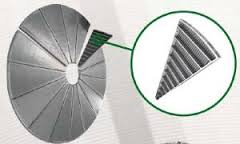If you are not familiar with Kanthal, it is an alloy belonging to the family of stainless steel, chromium, and iron that are used for a variety of applications. The Kanthal mesh is commonly used for vaping with the conventional mode of wattage. Whether it is for rebuilding or dripping, beginning with Kanthal is a good option. As it can comfortably and rigidly retain its shape when coiled, it is also used for wicking. When it comes to creating single wire coils, the alloy has gained huge popularity.
What is vape wire?
The Kanthal A1 contains aluminum, ferrite iron, and chromium alloy and extensively used for making coils. With the capacity to be heated to temperature ranging within 1400 degrees Celsius, it has the capacity to tackle stress without oxidation. If you are looking forward to a safe vaping session, relying on Kanthal mesh is the best option. No wonder, it is one of the most popularly-used wires and commonest among the coils available in the vaping market ad ideal for usage on a regular device operating on volts or power. So, if you want to avid toxic materials that release during vaping, relying on Kanthal wire can help.
Benefits to get
Kanthal mesh is one of those materials that perform truly well with at high temperatures beyond 1400 degrees Celsius. Due to the ability to withstand high heat, Kanthal mesh is a suitable material for heat processing applications and furnaces. Here is what you need to know.
- Due to the high melting point of Kanthal, it is hard to soften the material when it is serviced at high temperatures.
- The alloy has a low co-efficient of thermal expansion.
- The Kanthal mesh comes with a good thermal conductivity and can perform reasonably well at high temperatures.
- The alloy can resist oxidation and different types of corrosion taking place at high temperature.
- The alloy has high material strength and low vapor pressure.
Pros of using kanthal wire mesh
There is a multitude of reasons to use Kanthal wire or mesh for vaping. Here are a few points listed below.
- The Kanthal wire mesh can twist and braid without breaking due to its minimum ramp-up time.
- You can use the wire mesh easily with your hands and it has the ability to form into coils.
- Most of the coil builders prefer using Kanthal mesh as it is one of the most budget-friendly among the options available.
- When compared with various heating wires, it provides stable resistance, which indicates fewer chances of shot circuit at high temperature.
- For people who prefer vaping in a mechanical mode, the wire mesh includes varying wattage.
Mesh coils for vaping
The large surface area of Kanthal wire mesh coils is one of the primary reasons to use it or vaping. However, there are other reasons to note.
- Faster heating of the coil or ramp up time.
- With wire mesh coils, you can make the vape more consistent and get the flavor from a large surface area.
Coils usually last for several months and vapers are known to obtain more intense flavors from mesh coils than regular coils.

